How Can Continuous Water Quality Monitoring Improve Lakes?
(Updated October 2021)
Lake Taihu is China’s third-largest freshwater lake.
Boasting an area of 2,251 square kilometers (869 square miles), it’s connected to numerous rivers and streams that support millions of people. The lake’s hyper-eutrophic, shallow waters average just more than 2 meters (6 feet) in depth. They warm and mix easily, providing an ideal setting for nutrients to feed explosive growths of algae, which often lead to low-oxygen conditions and unpleasant odors.
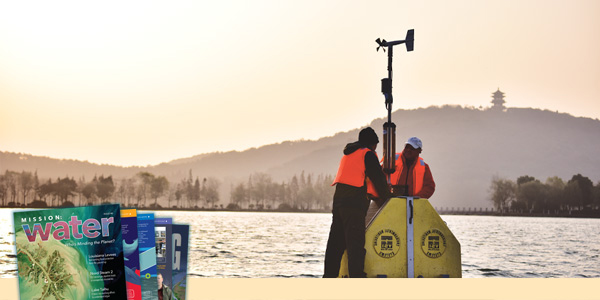
Maintaining a network of 70 buoys requires a hands-on approach to field work
Overwhelming algal blooms threatened aquatic life and cut off drinking water for millions of nearby residents in the early 2000s. This prompted local authorities to take action by forming the Taihu Basin Water Resource Monitoring Capacity Building Project and collecting data.
The extensive monitoring network started with the construction of gaging stations that allowed regulators to track inflows to Lake Taihu’s basin, important for assessing levels of nutrients that wash into the lake from surrounding farmland and urban areas.
Understanding the potential for nutrient inflows has improved early warning capabilities and enabled more accurate water quality forecasts.
The gaging stations are joined by a network of 70 buoys bearing advanced monitoring technology, including multiparameter sondes from YSI, a Xylem brand. The integrated buoy systems capture data around the clock, spotting changes in blue-green algae levels, especially near drinking water intakes.
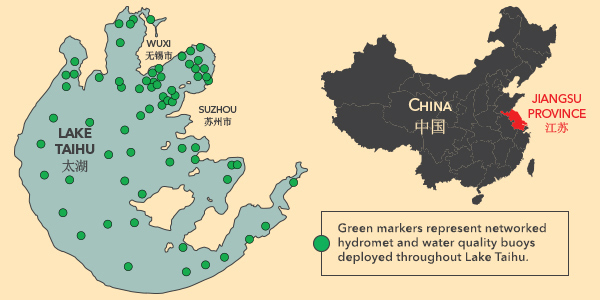
Having collected data for years now, scientists can spot trends and make quick decisions, even in the face of typhoons and other extreme weather patterns that send massive amounts of nutrient-rich runoff into the lake.
With complementary tools like videos of algae blooms, boat patrols, and measurements taken from shore, water quality managers have become better able to manage the aquatic health of Lake Taihu. This new era of monitoring and management started with the selection of the right instrumentation and the right parameters on their monitoring platform.
Which Water Quality Parameters Matter for Harmful Algal Blooms (HABs)
Growth-stimulating nutrients are a cause of harmful algal blooms and thus an obvious thing to monitor for, but certain types of organic matter often accompany those nutrients and can be valuable surrogates to monitor as well. (Learn more, Answers to the Top 5 HAB Monitoring Questions).
Salinity is interesting particularly in coastal environments, where freshwater incursions might introduce algae into a system, at the same time reducing salinity.
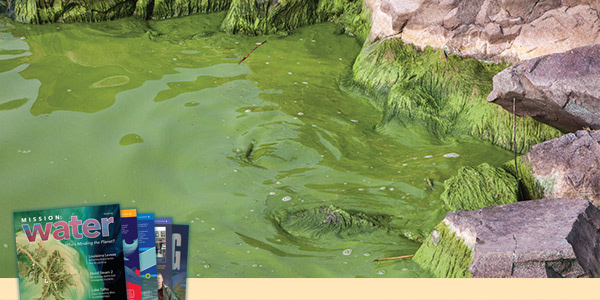
Most algae, such as the red tide-former Karenia brevis, have specific salinity ranges at which they can grow. The dynamics of a system and objectives of a monitoring program will dictate whether these water quality parameters will be valuable.
In almost all scenarios, however, certain water quality parameters are a must-have: namely algal pigments, pH, DO, and temperature. This has proven to be true for the expansive Lake Taihu monitoring network.

Understanding HAB Events is Key to the Monitoring Program
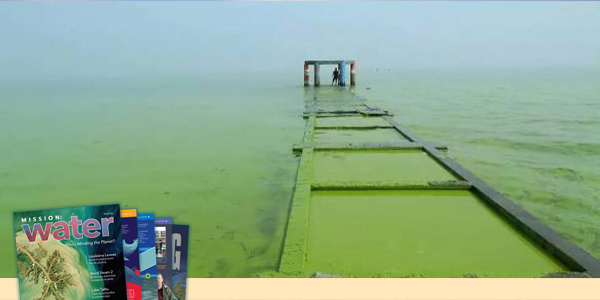
Temperature
Warming waters in Lake Taihu, due to climate change, seasonal shifts, or thermal pollution, favor the proliferation of most blue-green algae that form HABs.
Like most life forms, algae have a preference for specific temperature ranges. While it affects algal growth, temperature isn’t affected by algae, distinguishing it from pigments, DO, and pH.
One shouldn’t fall for the notion that an HAB can’t occur in cool waters. Some species of algae are more prone to bloom in springtime, when waters are slightly cooler (such as Anabaena in North America), while others favor summer waters (such as Microcystis, virtually anywhere it is found!). There have even been algae blooms under ice (such as some species of Planktothrix).
As a general rule, HABs have a predictable “season” in most source waters, and this is true for Lake Taihu where Microcystis often dominates. Changes in temperature are good indicators that one should be on alert for.
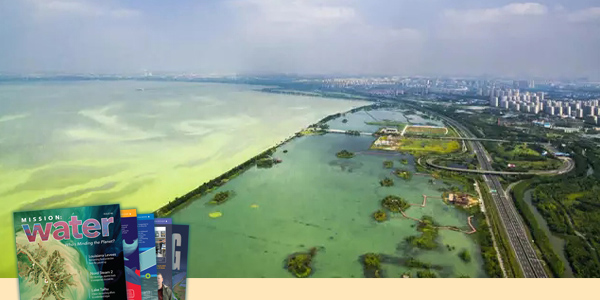
Algal Pigments
Algae have unique pigments that they use for photosynthesis, the process of using sunlight and carbon dioxide to grow. All algae, from blue-green algae to red-tide algae to seaweed, use the pigment chlorophyll for photosynthesis.
Lake Taihu's blue-green algae have additional pigments that are useful to monitor and help distinguish the types of algae that are less likely to be toxic. The pigment phycocyanin is a unique indicator of blue-green algal growth in freshwater systems, and a similar pigment called phycoerythrin is an indicator of blue-green algal growth in marine systems.
Using in-situ sensors for algal pigments can reduce time and expense required for manually collecting water samples, whether those samples are used for pigment extractions, cell counting and algae speciation, or toxin analyses. Sensors also can help managers to identify when to apply treatments, saving time and money. While clearly powerful technology, algae pigment sensors of any type are most valuable when paired with DO, pH, and temperature.
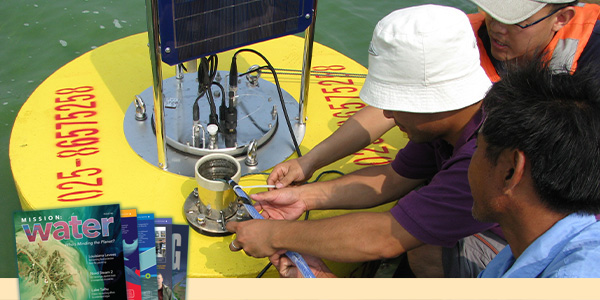
Acidity or Alkalinity (pH)
Many water managers observe predictable pH patterns when watching for HABs. Like DO, pH responds to the growth of algae, typically increasing with increased algal growth. Also, as with DO, pH's response to algal growth is a balance between photosynthesis—which consumes dissolved carbon dioxide—and respiration—which generates carbon dioxide. While algae are the main consumers of carbon dioxide in a system, they and all the other organisms respire, generating CO2.
As algae consume CO2, less of the gas dissolves into the water as carbonic acid. With less of this acidic form in the water, the pH will increase during periods of high algal growth, especially during daylight hours. Thus, pH can be a highly useful indicator of both the rise and decline of an algal bloom in Lake Taihu. It can even reach pH 9 or 10 during severe blooms.
Lake Taihu’s pH levels have also been shown to be influenced by CO2-generating automobile emissions that facilitated higher introductions of CO2 into the water from the atmosphere. This acidification effect can counter the acid-reducing effect that high-algal growth might have.

This dynamic demonstrates that general water quality parameters, and what they mean for the purpose of HAB monitoring, are very context-specific and a system-level understanding is important before conclusions are drawn regarding the stages of an algal bloom. It is also the reason that monitoring multiple parameters is highly valuable.
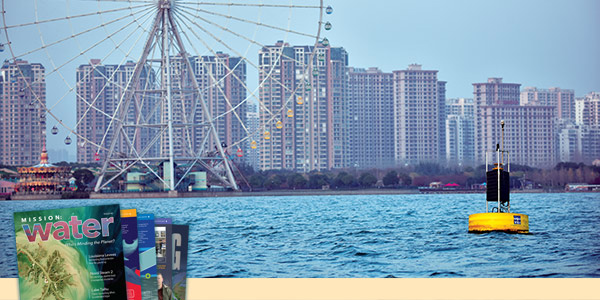
Monitoring urban development is equally as important as protecting the historical aspect of Lake Taihu. This buoy is located next to the "Star of Lake Tai" one of the world's largest ferris wheels.
Dissolved Oxygen
“Normal” concentrations of dissolved oxygen (DO) vary widely, and are affected by temperature, barometric pressure, and salinity. As temperatures increase, DO decreases; as pressure decreases, DO decreases; as salinity increases, oxygen solubility decreases. In general, fish require over 5 mg of oxygen per liter of water to breathe, and concentrations below that will place most aquatic live under significant stress.
Algae have interesting effects on DO in Lake Taihu. Oxygen is a product of photosynthesis, and in a balanced diurnal cycle of photosynthesis and respiration, algae generate and consume oxygen. Meanwhile, other organisms continuously consume oxygen. When algae bloom in Lake Taihu, an imbalance occurs.
During the early and peak growth phases of an HAB, DO can increase significantly in the vicinity of the bloom due to exceedingly high daytime photosynthetic activity. More oxygen is generated than can be consumed by either algae or other organisms, and sensors may indicate that the water is super-saturated with oxygen.
As the bloom fades and dies, photosynthetic activity declines, and further the expired algae become food for bacteria and other things that consume oxygen. The overall effect is that DO levels can drop precipitously. Such anoxic conditions can be dangerous for other life in the water, and is often the root cause of fish kills that occur in the wake of a HAB.
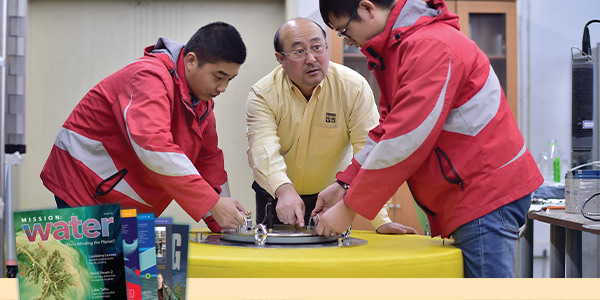
Collaboration and precision are essential elements of creating a valuable and productive monitoring system.
Turning the Tides
It takes a holistic view of water quality, flow, and discharge to understand the complex dynamics of aquatic environments, especially as they relate to harmful algal blooms. With an expansive network of instrumentation at their disposal, environmental officials have vastly improved the health of Lake Taihu since the harmful algal blooms of the early 2000s.
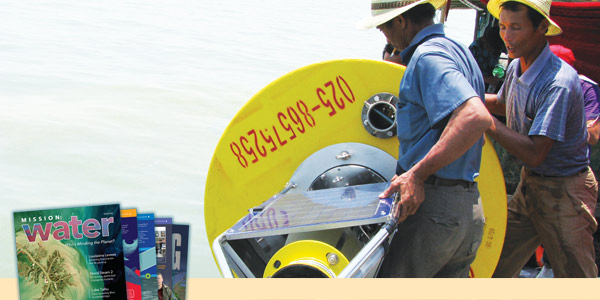
Deploying an environmental buoy may seem challenging, but a little teamwork is all that's required.
The Taihu Basin Water Resources Monitoring Capacity Building Project and other related government actions, such as regulation of industrial discharges, have led to improved conditions not only for the Lake but also for the people who live around it.
Increased awareness of environmental issues in China— and an international spotlight on Lake Taihu in recent decades—have likewise shifted the country’s view toward better management for Lake Taihu, but there’s still more work to do.
And it all starts with the data.
